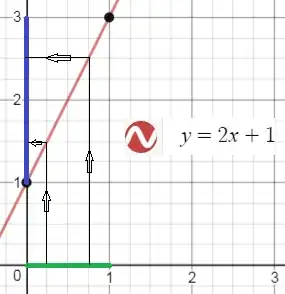Prop: Show that the intervals $(0, 1)$ and $(1, 3)$ have the same cardinality.
What I have tried: I showed that the intervals $[2, 4]$ and $[0, 5]$ have equal cardinality by creating a function $F(x) = \frac52x - 5$. I did this by getting the length of both intervals, however, I don't understand why this works. In my notes, it shows that the length of $[2, 4]$ is $2$ but if we are including both endpoints shouldn't it be $3$? Same goes for the interval $[0, 5]$ we should have a length of $6$, not $5$, but when using $5/2$ and shifting everything by $-5$ it seems to work just fine.
Trying to solve this current prop: Because it is an open interval we cant use $0$ and $1$ from what I understand so I don't quite understand what to use as the length of this interval.
I have tried reading other questions similar to this one however I am still stumped.
Thanks for the support!
